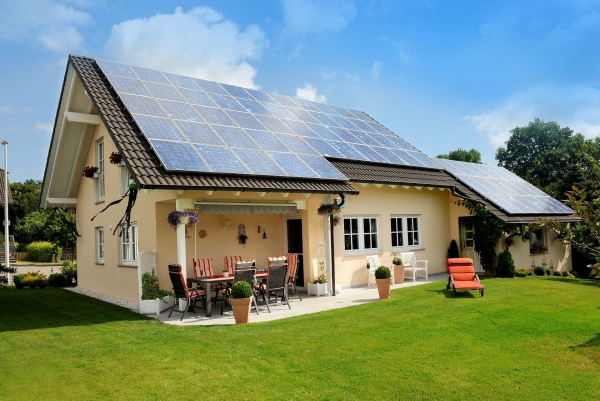
Solar Energy UK has published a manifesto stating that 50GW of solar is needed by 2030, with 30GW of zero-carbon energy storage. In the first 100 days, it calls on the next government to publish a roadmap for achieving this.
By the end of this year, the UK will have about 20GW of solar generation capacity in place, with 8GW of energy storage. The goals set out by Solar Energy UK would increase this capacity in line with the current government’s target of 70GW of solar by 2035.
The manifesto sets out five actions the solar and energy storage industries need from the government: embrace UK solar, bring the benefits of solar and storage home, turbocharge the network for net zero, build the skills for British green jobs and implement a renewables-first approach to market reform.
According to Solar Energy UK, the barriers to fully embracing solar are the inconsistent planning system and the symbiotic relationship between energy security, food security and restoring nature being overlooked. “We do not have to choose one over the other, and solar can play a key role in all of them,” the manifesto states.
It is also crucial for the next government to deliver consistent planning decisions. On this topic, Solar Energy UK stated that failing to respect established national policy has overturned solar planning refusals more than any other kind of development.
This, in turn, has negatively impacted investment and needlessly extended the UK’s reliance on fossil fuels.
Bringing the benefits of solar and storage
A key mission of Solar Energy UK’s manifesto is to bring the benefits of both solar and storage to the nation. The organisation references the popularity of rooftop solar, which recently surpassed 1.5 million small-scale installations.
Despite this growing popularity, the manifesto outlines that the government still has a role in ensuring that solar and storage technologies are available for low-income households and communities that want to invest in their own projects on schools and other public buildings.
Utility-scale developments for solar and battery storage also offer opportunities which the government could support with the right market signals, particularly via the creation of a national target for the technology. Speaking exclusively to Solar Power Power Portal, Solar Energy UK CEO Chris Hewett emphasised the need to set an energy storage target to facilitate new renewable energy generation technologies.
Hewett said: “There needs to be a target for energy storage for two reasons: one is so the industry itself can see where the direction is so it’s not left up to guesswork, but also when regulators talk about flexibility in the market, they don’t often distinguish between high carbon flexibility or using batteries. We know that flexibility needs to be delivered by 100% zero carbon technology.”
Turbocharge the network
The next aspect of the manifesto focuses on “turbocharging the network” for net zero. This area focuses specifically on grid connections, an energy system aspect that currently jeopardises net zero prospects.
On the topic, Solar Energy UK calls on the next government to ensure that Ofgem allows greater and faster investment in the grid, improving operator service and modernising grid management.
Building skills for green jobs
The manifesto also touches on green jobs. To reach net zero, the government must offer the British workforce opportunities to transition into renewable energy and provide the required maintenance in a net zero Britain.
The manifesto outlines that the next government should work with the industry to promote career opportunities, with a network of green skills hubs offering training in regions where we know that renewables deployment will be extensive.
Government support is also needed to expand domestic manufacturing of solar-related technologies, such as switchgear, cabling, batteries, and mounting systems.
Discussing the importance of developing green jobs for the industry, Chris Hewett told Solar Power Portal: “No one in the industry is saying there is an opportunity for PV module manufacturing in the UK. That’s not a sensible way to look at the supply chain. You want to examine battery manufacturing, mounting, and potentially even inverters in the medium term.
“There is also potential for future technologies like flexible solar and thin film. Innovators in the UK are developing those products, so we want to support those as much as possible.”
A renewables-first market reform
The manifesto also touches on the need for the UK to remain competitive with other markets such as the EU, US, China, India and others. To ensure this, Solar Energy UK states that the next government must ensure that solar and energy storage has a level playing field with other energy technologies and other countries.
One crucial area in bolstering solar capacity is the Contracts for Difference (CfD) scheme, which has proven successful for the solar industry in recent years.
Solar Energy UK states that more than 11GW of solar capacity is approved and awaiting construction. However, the current budget for Allocation Round 6 of the CfD scheme will facilitate the development of less than 2GW, putting targets at risk.
Hewett told Solar Power Portal that this is one of the primary areas that must be addressed to support solar.
“We’re trying to remove the barriers to private sector investment as much as possible. The first step is the CfD auction round 6. There’s a limited budget, and we know there are an awful lot of projects which are eligible to bid into that; if it looks like there are more projects than they can cope with, then an early ministerial position on raising that budget is something which is in the gift of a new minister,” Hewett said.
Another area that the next government must navigate carefully is the Review of Market Arrangements (REMA), which is set to introduce a number of changes to the energy market to ensure its functionality in the changing landscape.
Solar Energy details that the next government should ensure that the Electricity Generator Levy, the Capacity Market, Balancing Mechanisms and REMA attract investment in clean energy with storage and flexibility to provide backup.
Discussing REMA, Hewett said: “If you look at the way the energy market is governed through regulation, whether it’s the way CfDs are structured or whether it’s the way that REMA is being taken forward, whether it’s the capacity market and balancing mechanisms or even the generator levy, all of those different economic and regulatory interventions will shape the market. I think a new government needs to look at them and ask how we can ensure a level playing field.”
For REMA, Solar Energy UK urges caution around locational pricing, which could actually deter investment. “We know there is a lot of private capital looking for ways to invest in solar energy and storage at the moment around the world,” Hewett said.
“If changes to our regulatory system are going to create more disincentives for that capital to come into the UK renewables market, then that is something we urge the government not to do.”







